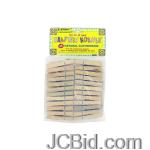
| Updated Blogs |
|
Computer Support Blog
Essensial Software for Web Based Support
HP Server and Desktop
HP ILO - Remote Tech-Support Software
More .....
|
 RSS Feed | Login
RSS Feed | Login Vitamin C Info
its all about vitamins
Know More About Vitamin K and Its Discovery
By Alven Alvie at 2014-08-08 06:36:11
Vitamin K is a group of structurally similar, fat-soluble vitamins that the human body needs for modification of certain proteins that are required for blood coagulation, and in bone and other tissue. The modification of the proteins allows them to bind calcium ions. Chemically, the vitamin K family are 2-methyl-1,4-naphthoquinone (3-) derivatives.
Vitamin K includes two natural vitamers: vitamin K1 and vitamin K2.[1] Vitamin K2, in turn, consists of a number of related chemical subtypes, with differing lengths of carbon side chains made of isoprenoid groups of atoms.
Vitamin K1, also known as phylloquinone, phytomenadione, or phytonadione, is synthesized by plants, and is found in highest amounts in green leafy vegetables because it is directly involved in photosynthesis. It may be thought of as the "plant form" of vitamin K. It is active as a vitamin in animals and performs the classic functions of vitamin K, including its activity in the production of blood-clotting proteins. Animals may also convert it to vitamin K2.
Vitamin K2, the main storage form in animals, has several subtypes, which differ in isoprenoid chain length. These vitamin K2 homologues are called menaquinones, and are characterized by the number of isoprenoid residues in their side chains. Menaquinones are abbreviated MK-n, where M stands for menaquinone, the K stands for vitamin K, and the n represents the number of isoprenoid side chain residues. For example, menaquinone-4 (abbreviated MK-4) has four isoprene residues in its side chain. Menaquinone-4 (also known as menatetrenone from its four isoprene residues) is the most common type of vitamin K2 in animal products since MK-4 is normally synthesized from vitamin K1 in certain animal tissues (arterial walls, pancreas, and testes) by replacement of the phytyl tail with an unsaturated geranylgeranyl tail containing four isoprene units, thus yielding menaquinone-4. This homolog of vitamin K2 may have enzyme functions that are distinct from those of vitamin K1.
Bacteria in the colon (large intestine) can also convert K1 into vitamin K2. In addition, bacteria typically lengthen the isopreneoid side chain of vitamin K2 to produce a range of vitamin K2 forms, most notably the MK-7 to MK-11 homologues of vitamin K2. All forms of K2 other than MK-4 can only be produced by bacteria, which use these forms in anaerobic respiration. The MK-7 and other bacteria-derived forms of vitamin K2 exhibit vitamin K activity in animals, but MK-7's extra utility over MK-4, if any, is unclear and is presently a matter of investigation.
Vitamin K1 was identified in 1929 by Danish scientist Henrik Dam when he investigated the role of cholesterol by feeding chickens a cholesterol-depleted diet.[3] After several weeks, the animals developed haemorrhages and started bleeding. These defects could not be restored by adding purified cholesterol to the diet. It appeared that—together with the cholesterol—a second compound had been extracted from the food, and this compound was called the coagulation vitamin. The new vitamin received the letter K because the initial discoveries were reported in a German journal, in which it was designated as Koagulationsvitamin.
Three synthetic types of vitamin K are known: vitamins K3, K4, and K5. Although the natural K1 and all K2 homologues and synthetic K4 and K5 have proven non-toxic, the synthetic form K3 (menadione) has shown toxicity.
For more information please visit:Vitamin K Info
Permalink | Comments (0)
Comments
To add a comment please login by clicking here
JC Store | JasmineCorp
|
JCBid
|Software
Development |
Domain
Registration | Hosting
| Web
Designing | Buy
Books |
Advertise
with JCSearch |
Whois
|
IP
Locator |
Add
Search |
Shopping
| Store
|
Free Blogs |
Free
GuestBook | Free
E-Cards |
Free
Games |
Free
Tutorials |
Set
as Home | Add
to Favorite
| Suggest
a Site |
Directory
Our Portfolio
| Terms of service
| Free quote
| Tell a Friend
| Special Offer
| Job Opportunities
| games
| Usenet Groups




